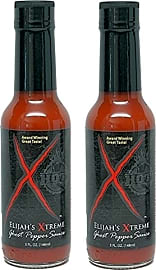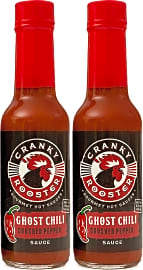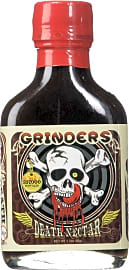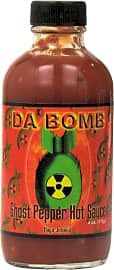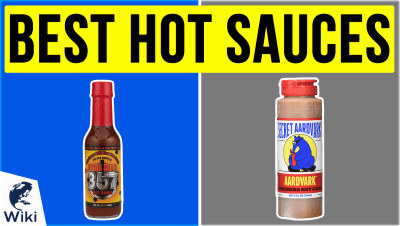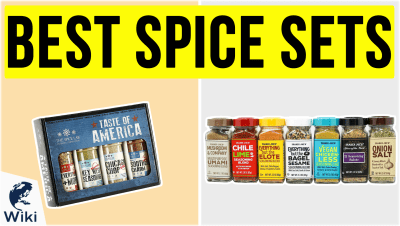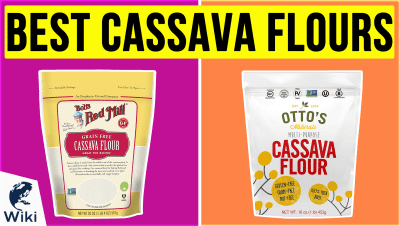The 10 Best Ghost Pepper Hot Sauces

This wiki has been updated 37 times since it was first published in January of 2017. The ghost pepper isn’t, technically, the world's hottest, but don’t be fooled into thinking these bad boys won't hit you with the heat. Packing a Scoville punch in excess of 1 million units, these veggies, also called Bhut jolokia, will bring tears to your eyes and fire to your palate with only a drop. Sauces made from this potent plant vary in flavor and intensity, so get ready for some variety. When users buy our independently chosen editorial picks, we may earn commissions to help fund the Wiki.
Editor's Notes
February 26, 2019:
We examined ghost pepper crowd pleasers from "just enough heat to make you tear up" to "hot enough to make you cry," although we do know that the hot sauce experience is ultimately subjective. And speaking of the subjective, one of the most argued-about choices is Dave’s Gourmet Ghost Pepper. Some swear by its heat, while others claim that it doesn't bring the funk. Nevertheless, we felt it deserved a place, thanks to the many folks who keep it on deck as a beloved standby. For something hotter, we added Satan's Ghost, which has a pleasing flask-shaped bottle that shouldn't slip out of your hands. We also removed The Ghost Hot Sauce because of ongoing arguments as to whether it's really all that hot; for many aficionados, the flavor it brings may not justify its weaker flame.
The Heat Is On
Armed with this knowledge, you'll know when you can sauce it up and when you might want to go easy on the bottle.
What with today's arms race to create scorching hot peppers that could seemingly burn your tongue right out of your mouth, the ghost pepper, once crowned the hottest pepper in the world, now seems tame by comparison. For many chiliheads, however, it remains a go-to for quality sauces with kick. To comprehend just how much fire the ghost pepper, also called the bhut jolokia, brings to your table, you'll need to understand where peppers get their heat and how this is measured. Armed with this knowledge, you'll know when you can sauce it up and when you might want to go easy on the bottle.
Peppers are hot thanks to a chemical called capsaicin, which creates a burning sensation when it comes into contact with your skin and mucous membranes. Even though there's no actual heat, the capsaicin essentially tricks your body into believing that there is, and your body reacts accordingly to "extinguish" the fire, by increasing saliva or tears, for instance. Capsaicin and its attendant response are what make pepper spray effective, and in high concentrations, it's nothing to fool around with.
Hot sauce makers and pepper cultivators have two methods for measuring the heat from capsaicin: the Scoville scale and high-performance liquid chromatography. Even though the latter is more precise, the Scoville scale is the more common measurement. The process of determining a pepper's Scoville rating goes like this: first, its capsaicinoids are extracted, and then the extract is increasingly diluted in sugar water until the majority of five trained taste testers can no longer sense the heat. The amount of dilution needed is the basis for a pepper's Scoville rating. For example, the oil from a pepper assigned a Scoville rating of 1,000 would have to be diluted 1,000 times before the heat is no longer detectable.
The ghost pepper has a Scoville rating of 1,000,000. To get a sense of how hot this is, consider that the jalapeño ranges between 2,500 and 8,000, while the habanero lands between 100,000 and 350,000. A good ghost pepper sauce, then, has the potential to be 10 times hotter than a habanero sauce, giving it plenty of bite for everything from chili to wings. Most serious hot sauce producers provide this Scoville rating on their bottles, so you have a starting point for understanding just how much heat you can expect. It should be noted, though, that the Scoville test and rating are somewhat subjective, so variations in heat are common.
Pour Some Flavor On Me
Although heat is a crucial component of an awesome ghost pepper sauce, a truly superlative variety packs in plenty of flavor, too. Certainly, a lot of what tastes good or bad is subjective, but certain flavors do tend to blend well, both within the sauce itself and between the sauce and any food with which it's paired.
Fruit flavors are another common addition to ghost pepper sauces, as they add a sweetness and complexity that is excellent on chicken, fish, and rice.
One of the most common flavor bases you'll find in a ghost pepper hot sauce is vinegar, since this sour liquid acts as a preservative that doesn't mask heat. Well, this is the claim of many chiliheads, anyway — other hot sauce lovers claim that vinegar is too sour or overpowering, seeking non-vinegar sauces, instead. Nevertheless, vinegar-based sauces are ample, with many producers taking advantage of flavored vinegars, like apple cider vinegar, to create complex profiles.
Fruit flavors are another common addition to ghost pepper sauces, as they add a sweetness and complexity that is excellent on chicken, fish, and rice. Papaya, mango, pineapple, and orange are go-to choices, making these sauces great for Caribbean-style recipes. Lemon and lime are often paired with these fruits, which can add a zingy kick.
On the less bright, smokier side are those ghost pepper sauces that feature chipotle peppers, tomatoes, carrots, or even brown sugar. These sauces will add some depth to your barbecue sauce and round out your ribs, pulled pork sandwiches, and wings.
You can also find ghost pepper hot sauces to take you around the world without leaving your home. There are varieties that integrate spice blends originating in just about any global cuisine you can think of, including Mexican, Korean, Thai, South African, Haitian, and so much more.
The Benefits of Hot Sauce
Many people buy ghost pepper sauce for the flavor and heat, but with researchers showing that capsaicin and hot peppers have ample health benefits, more and more health-conscious individuals are saying pass the hot sauce, please. For example, research has shown that capsaicin can cause death in prostate cancer cells, essentially causing these to commit suicide, although further studies on humans rather than rodents are required.
You may even be able to reap the benefits of capsaicin without ingesting it.
As if actually killing cancer isn't enough, capsaicin has other benefits, too. Studies have suggested a link between weight loss and capsaicin, as it may help boost metabolism, burn fat, and even suppress appetite. Your bottle of ghost pepper sauce could be more than just a condiment, instead representing one more tool in the battle of the bulge.
You may even be able to reap the benefits of capsaicin without ingesting it. Creams and gels featuring this chemical have been shown to reduce pain, including that from osteoarthritis, rheumatoid arthritis, and fibromyalgia, since it may block the nerves from receiving pain signals. The research surrounding these claims is somewhat inconsistent, though, so such pain-relief creams are usually recommended as one part of a pain management strategy and not a cure-all.
Finally, one caveat for everyone seeking a hot sauce health high: ghost pepper sauces are anything but weak, so if you have a preexisting medical condition, it's a good idea to check with a doctor before beginning any type of "hot sauce your way to health" program.





